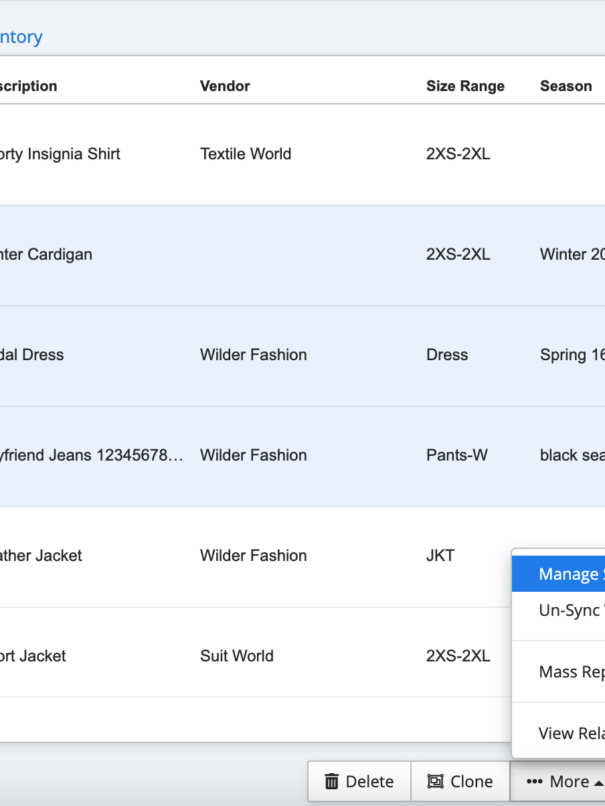Inventory optimization is essential for managing company assets. Why? Because in order to mitigate common inventory problems like stock shortages and excess inventory, it’s crucial to keep an eye on your stock levels and know how many of each SKU you have at a given time.
Luckily, there are certain techniques that can help you to optimize inventory and decrease risk.
In this post, you will learn what inventory optimization is, the importance of optimizing inventory, and inventory optimization best practices.
What Is Inventory Optimization?
Inventory optimization is the practice of keeping the proper amount of stock on hand to satisfy demand. It helps keep operational expenses low while preventing common inventory problems (such as deadstock or stockouts). As a result, optimizing inventory improves profitability and makes it easier for businesses to hit their revenue targets.
Why is inventory optimization important?
The constant changes in customer demand, as well as the unpredictable effects of natural disasters, lack of raw materials, closed factories, and other issues, make it challenging to optimize inventory.
Luckily, if you have the necessary tools, technology, and resources, you’ll be able to better plan for the unexpected while at the same time keeping logistics costs low and meeting consumer demand.
Here are some of the most important benefits of optimizing inventory:
Balanced levels of inventory. By balancing inventory levels through optimization, you can avoid issues like overstocking or understocking. Knowing precisely which SKUs are on hand at your warehouse or distribution center at any given moment can help with inventory accounting, profitability, and the ability to satisfy customer demand.
Optimized shipping and faster delivery times. Optimizing inventory allows you to follow goods in real time across the whole supply chain. This way, you allocate inventory strategically to the warehouses with the highest demand and make sure that goods are on hand when customers want to purchase them.
Increased customer satisfaction. When you optimize inventory, you can ensure that orders can be picked up, packed, and shipped immediately. This leads to enhanced customer satisfaction, improved customer loyalty, and increased customer lifetime value (LTV).
Prevent overstocking. Poorly optimized inventory often results in overstocking safety stock. In addition to increased carrying costs, overstocking can also result in deadstock—items that are no longer able to be sold because of seasonality, being past their expiration date, or a gradual decline in demand.
Reduced operational costs and improved profitability. When companies optimize inventory, they automatically cut their warehousing, dead stock, and storage costs. This is due to the fact that inventory optimization gets rid of surplus inventory, which drains money as it sits on warehouse shelves. Additionally, if that merchandise doesn’t sell fast, it will choke off your cash flow. However, when you use inventory optimization, you only stock the goods that are truly in demand. As a result, your operational costs will go down and your profit will rise.

Image by wirestock on Freepik
What Are the Main Elements of Inventory Optimization?
In order to ensure that you always have the proper amount of products available for order fulfillment, you must examine your current inventory levels, storage capacity, seasonal trends, and more. Here is a summary of the steps that the inventory optimization process takes.
Inventory levels
Keeping excess inventory can cost your business a lot of money. On the other hand, insufficient inventory results in lost sales opportunities and disgruntled customers. The likelihood of common inventory problems, such as high storage costs and out-of-stock items, can be decreased by maintaining optimal inventory levels with the perfect quantity of each product in stock.
Demand forecasting
Utilizing historical data to predict future demand for your products is known as demand forecasting. Demand forecasting helps companies make more informed supply decisions that keep carrying and storage costs low.
Although demand forecasts may never be entirely precise, they will greatly reduce the likelihood of stockouts and increase customer satisfaction while optimizing stock levels.
Storage
Inventory optimization depends on where you keep your stock because it determines how quickly you can meet customer demand. With the aid of a cost-effective inventory storage solution, you can manage your inventory to satisfy customer demand while giving your company room to expand.
Inventory replenishment
The process of moving goods from storage to picking shelves or receiving more stock from the manufacturer is known as inventory replenishment. The process of inventory replenishment is crucial because it makes sure there is adequate stock available to be chosen and packed as soon as each order is received. By replenishing inventory as needed to satisfy demand, you can prevent backorders and delayed deliveries.
Inventory Optimization Techniques and Best Practices
There are a number of techniques and strategies that companies can implement to optimize inventory:
1. Use demand forecasting
It’s impossible to predict how much stock you’ll truly need in the future without demand forecasting. Guessing, no matter how well-informed it is, will put you at risk of running out of inventory or overstocking. But when businesses use tools like ApparelMagic to estimate inventory needs and plan for meeting customer demand, they can be confident in their ability to buy just enough inventory to cover upcoming sales without going overboard.
The most important information to have in order to forecast demand is historical order data, which sheds light on sales trends. By using this data, you can enhance supply chain efficiency, save money, and improve your customer experience.
2. Determine the ideal quantity of safety stock
Commonly referred to as “buffer inventory”, safety stock is the extra products you have on hand in case of an emergency or a disruption in the supply chain that results in less inventory than usual being available.
In order to determine the ideal quantity of safety stock, you’ll need the average daily usage, average lead time, maximum daily usage, and maximum lead time for each SKU.
That being said, businesses that optimize inventory and make sure to always keep enough safety stock have a much lower risk of stockouts when things go wrong.
However, you should be careful not to have too much safety stock as this can easily turn into excess stock. Excess stock is the surplus inventory a business has on hand but unlike safety stock, the excess stock is not a strategic buffer against stockouts. Instead, excessive inventory drives up write-offs, raises warehousing costs, and complicates inventory management.
3. Use the reorder point formula
Although knowing how much inventory you should keep on hand, you must also know when to place your next order. Your reorder point (ROP) must guarantee that surplus money is not invested in inventory and account for any lead periods. Below is a simple formula you can use to calculate reorder points:
Reorder Point = Safety stock + Demand during lead time
If you calculate your ROP manually, you will need to repeat this calculation regularly. This is because your reorder point changes every time your demand changes. As an alternative, you can use a tool like ApparelMagic that automatically determines your ROP per SKU level using current demand trends and your current stock levels. Then, ApparelMagic will email you a replenishment alert whenever any product is getting close to being time for a reorder, thus streamlining your process of replenishing inventory.

Image by aleksanderlittlewolf on Freepik
4. Perform regular audits of your inventory
Manual inventory tracking carries a significant risk of human error. That is why it is crucial to conduct routine audits to ensure inventory accuracy.
These audits compare your current financial records to your actual inventory levels, allowing you to adjust your inventory levels to make sure they are as accurate as possible. In addition, it helps you spot inventory shrinkage (such as damaged or lost products).
5. Use inventory optimization tools
The simplest and most error-proof technique to optimize inventory is through the use of an inventory optimization tool like ApparelMagic. ApparelMagic syncs all your SKUs and provides automatic real-time inventory tracking and instant access to inventory KPIs.
With this level of inventory accuracy, there is more inventory control, which facilitates intelligent decision-making and inventory optimization. This, in turn, helps decrease operational expenses, prevent stockouts, and increase your profit margins.
The Bottom Line
Inventory optimization means striking the ideal balance between supply and demand in order to minimize high storage costs and stockouts. There are several ways to optimize inventory, such as calculating and automating reorder points, forecasting demand, and implementing inventory software to track inventory in real time.
With inventory management software like ApparelMagic, you can sync all your SKUs and orders to access all inventory, fulfillment facilities, sales channels, and customers in one location.







